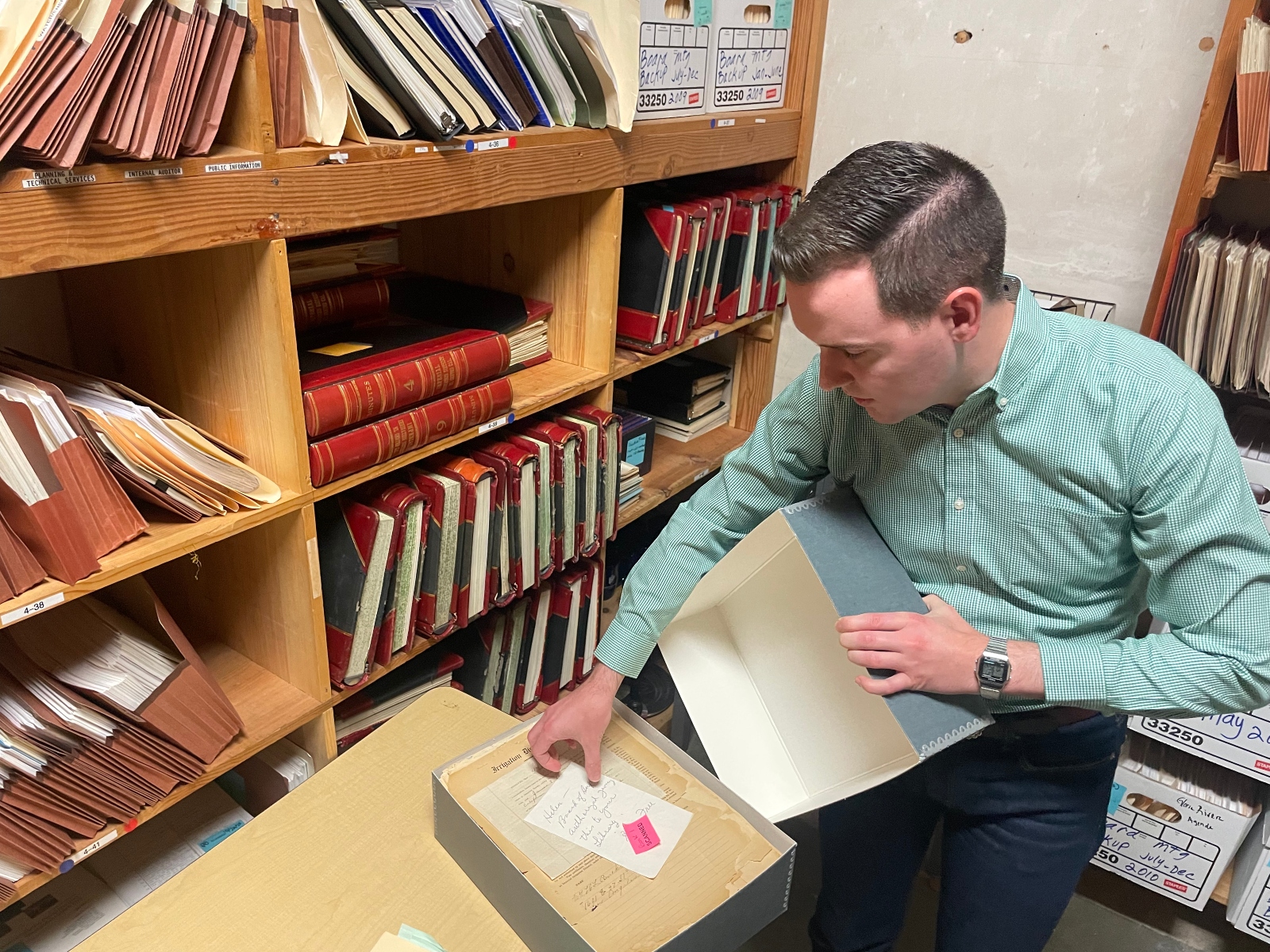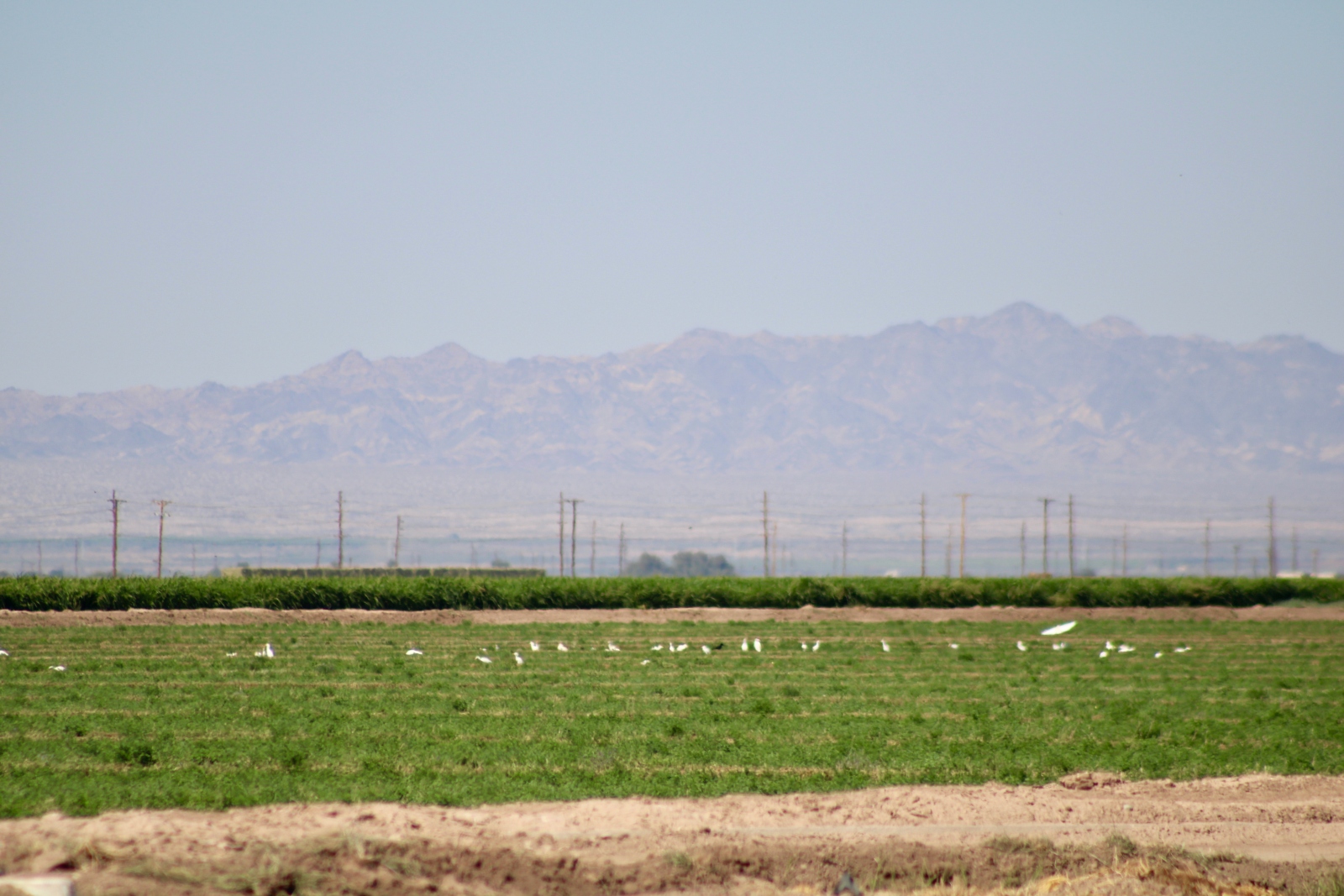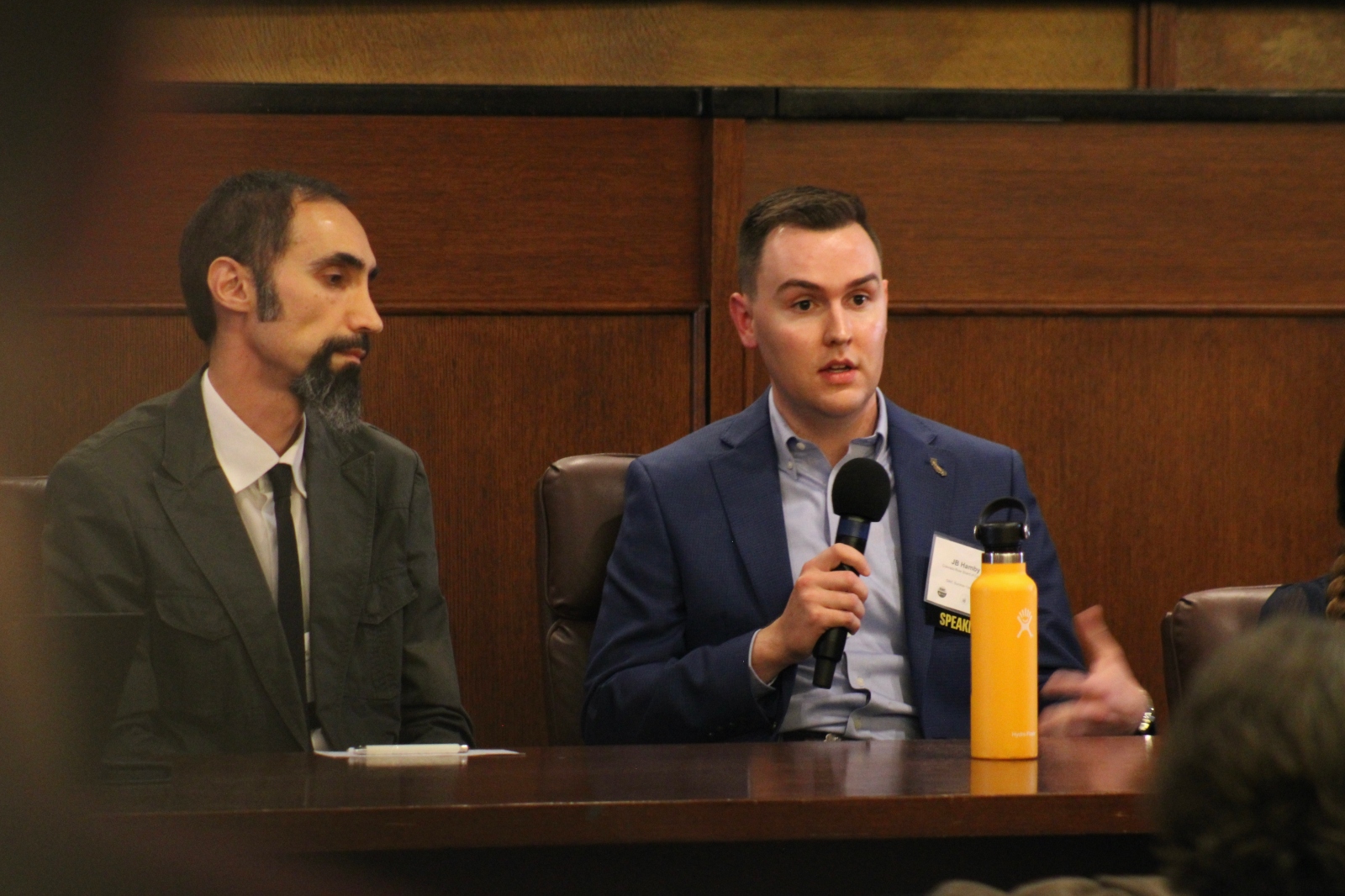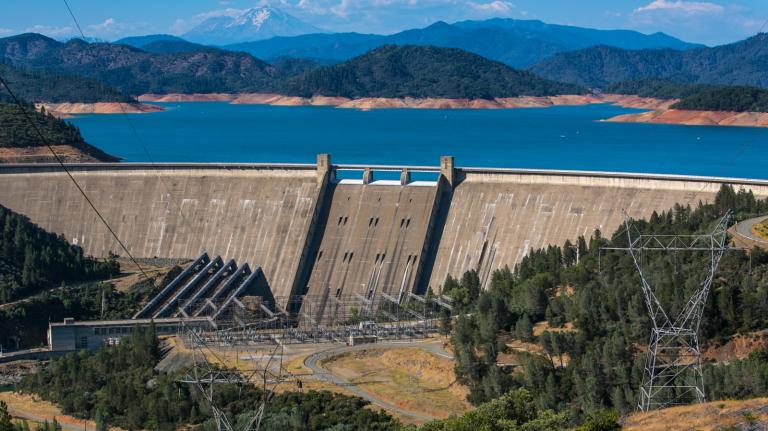This story was originally published by KUNC.
California’s Imperial Valley is one of the few places where a 95-degree day can be described as unseasonably cool.
In the shade of a sissoo tree, with a dry breeze rustling its leaves, JB Hamby called the weather “pretty nice” for mid-June. Over his shoulder, sprinklers ticked away over a field of onions. Every few minutes, a tractor rumbled across the broiling asphalt of a nearby road.
Hamby is a water policy bigwig, especially around these parts. He helps shape policies that define how water is used by arguably the most influential water users along the Colorado River. Hamby holds two jobs – he serves on the board of directors for the Imperial Irrigation District (IID) and was recently appointed to be California’s top water negotiator.
And he’s only 27 years old.
The Colorado River is governed by more than a century of legal agreements, most of which were hammered out by generations of older white men. The ranks of the river’s top policy negotiators have begun to diversify in recent years, including more women and people of color, but still tend to skew older. Hamby’s inclusion marks the first time a member of Generation Z will be at the negotiating table, making deals for the Southwest’s most important water source.
“I think every generation has an opportunity to do it better or worse than the prior one,” Hamby said. “My hope, at least, is being one representative of a generation about trying to make things better.”
The Imperial Valley holds a special place in the Colorado River conversation. It uses more water than any other single entity along the river – which includes dozens of farming districts and big cities like Los Angeles, Phoenix, and Denver. Using that allocation, the valley produces about $3 billion in crops and livestock each year. The district has been described as brash, combative, and eager to push back on its critics.
The district is situated in California, the state with the largest allocation of the river. During negotiations in the winter of 2022-2023 the state became the lone holdout to a watershed-wide consensus deal to reduce uses along the dwindling river, much of that due to reluctant agricultural districts like IID.

As climate change shrinks the Colorado River’s water supply, the Imperial Valley is increasingly in the crosshairs. Water managers from the seven states that use the river are squeezing every last drop out of a finite supply, and looking for new ways to conserve. They’ve turned to IID, and other farm districts, and cranked up pressure to cut back on agricultural water use as states draw up new rules for water use before 2026, when the current guidelines expire.
Hamby was elected as chairman of the Colorado River Board of California in January, giving him a seat at the river’s most important negotiating tables alongside other state delegates generations his senior – representing nearly half of the river’s roughly 40 million users.
And he’s taking that seat at one of the most critical moments in the river’s management, where users are collectively trying to figure out how to get by with a lot less water by making decisions that could upend generations of policy and attitudes around the West’s water.
Agricultural roots
Hamby was raised in Brawley, California, where about 25,000 people live amidst a sea of sprawling crop fields. Hamby’s family has lived in the Imperial Valley since his great grandfather left Texas during the Great Depression. He got a job digging irrigation ditches for the same water district his descendant now helps run.
“This blasting hot, tough place with tough people that have struggled and made hardscrabble existences in time and have had dreams to be made and dashed and made a living and a life out of hardscrabble desert,” Hamby said, “I think it shapes all of us. And I don’t think I’m any different.”
Hamby’s passion for water issues goes hand in hand with his interest in history. He was a history major during his time at Stanford University, and unlike many students, long nights in the library have lingered long after graduation.
Now, he spends a lot of free evenings among stacks of leather-bound documents and rolled-up maps in the district’s archives.
During some downtime between meetings on a June afternoon, Hamby twisted a dial and swung open the antique vault door that seals off a dusty room full of papers going back more than a century. In here, he’s spent hours rifling through minutes from the district’s earliest meetings.
“There’s really nothing new under the sun in the Colorado River space,” he said. “People change, some of the words we use to describe things change, but the core themes and issues are the same ones we deal with now than as we did 100 years ago.”
Hamby plucked a stiff maroon folder from a chest-high shelf in the corner of the vault.
“Here’s a good one,” he said, leafing through the yellowed pages within.
Hamby began reading from a handout given to local farmers in the 1940s or 50s during an information campaign against the Central Arizona Project, warning them of “subversive attempts” to “mislead” California growers on Colorado River issues.
The Imperial Irrigation District and the Central Arizona Project, a canal that carries water to Phoenix through more than 300 miles of desert, have carried their tensions into the 21st century.

“Your own experience is a very painful and expensive teacher,” Hamby said. “So it’s good to learn off of other people’s expense.
A seat at the table
Even decades before the current supply-demand imbalance put Colorado River water users in a bind, meetings were heated. Hamby recalled hearing about a particularly “spirited discussion” where the district’s board members sat around a table, each stashing a gun in the drawer in front of them.
While this century’s water negotiations have perhaps included fewer firearms, contentious and well-publicized water debates played out during Hamby’s childhood in the Imperial Valley. His curiosity grew as negotiators drew up the Colorado River’s current managing guidelines in 2007, and then re-upped its rules with the drought contingency plan in 2019. When he got old enough to get involved himself, Hamby felt it was important to help prepare the Imperial Valley and the state of California for the next wave of negotiations.
“I had a real strong interest in history,” Hamby said. “Particularly of our region and the history of the Colorado River and happened to grow up in the very place that really kick started all these discussions about a century ago.”
Armed with that robust knowledge of the past, Hamby plays his youth close to the chest.
“I’m sure other people occasionally think about it,” he said. “But it’s not something I really dwell on.”
Hamby’s colleagues agree that his age isn’t a hindrance.
“I think he’s turned it into a positive and brought sort of our fresh look at things,” said Tina Shields, IID’s water department manager. “You do things for so long and you do them because you’ve always done them. And I think he can shake things up a little from that perspective.”
Shields said the group of people shaping Colorado River policy has a long way to go in terms of diversity, but already looks different than it did in the early days of her career, when she would attend meetings in Las Vegas and be treated “like a cocktail waitress.”
“Maybe the diversity isn’t where it needs to be,” she said. “But I think it’s not the old white guys you see in the pictures from the old days.”
Hamby has had to balance any fresh perspective he brings to negotiating rooms with the needs of the people he represents. Right in his backyard, legions of growers make big money on farms that have belonged to their families for generations.
John Hawk, a farmer and county-level politician, took Hamby under his wing around 2019, when he first ran for the district’s board with the campaign slogan “Water is Life.”
“Some of the growers in the valley look at the value of the water as far as dollars and cents,” Hawk said. “But many of us in the farm community look at it as the value of producing crops. And I think JB looks at it that way.”
Perhaps Hamby’s most arduous task is to dig in his heels and try to keep water in California, just like so many of the state’s water negotiators before him. California’s Colorado River allocation isn’t just the largest among the seven Colorado River basin states – it’s also the most legally untouchable.
The 1922 Colorado River Compact dictates how water is shared in the arid Western watershed. The legal system prioritizes older uses of water, like agricultural districts, meaning their shares will be the last to be shut off in times of shortage. The legal scaffolding built on top of the compact shields the Imperial Valley’s voluminous uses.
California’s biggest water users would like to see that legal priority stay in place. When pressed on their role in negotiations about the river’s future, Hamby and other California water managers point to existing laws and say they should be followed. Water policy experts say California’s protected status on the river is unlikely to change without messy court battles, which states generally agree are best avoided.
“[Hamby] looks at the letter of the law and he says ‘It’s written, this is legal, and let’s support it,” Hawk said. “And I think you can’t ask for much more than that.”
Hamby seems to be sticking to that letter-of-the-law approach so far. Both California and the Imperial Irrigation District have signed on to conservation deals in recent months, but their contributions still lag behind Arizona’s agreed-to cutbacks.
In October 2022, the district was one of four agencies which agreed to cut back on water use by a combined 400,000 acre-feet each year from 2023 to 2026, reducing California’s total water use by about 9 percent. Imperial is allotted 2.6 million acre-feet each year, and is set to contribute more than half of the state’s entire conservation commitment.

In January of 2023, just weeks after Hamby began his tenure as California’s top water negotiator, the state was the lone holdout on a water conservation proposal signed by all six of the other states which use water from the Colorado River.
After that proposal was released, Hamby told KUNC the process by which it was created was “horribly broken,” and not carried out in good faith.
Since then, Hamby said he’s worked to build better relationships with water leaders from other states, making things more conversational and less adversarial.
In May, California, Arizona, and Nevada agreed to conserve a combined 1 million acre-feet each year until 2026. They did so once promised at least $1.2 billion in federal funds, designed to help incentivize farmers to pause some water use.
Arizona’s top negotiator, Tom Buschatzke, credited his relationship with Hamby as a factor that helped clinch the deal among the two feuding states.
“JB and I met in Yuma and kind of just had a good one on one conversation. It wasn’t really even business. It was just, let’s lay our cards on the table personally, get to know each other and build a relationship,” Buschatzke said at a recent University of Colorado river symposium. “And I think that jump started where we got among Arizona and California in the end.”
That rings true from Hamby’s perspective as well.
“The Colorado River is history,” Hamby said. “It’s science, it’s law, but it’s relationships that are perhaps equal, if not greater than any of those things.”
This story is part of ongoing coverage of the Colorado River, produced by KUNC and supported by the Walton Family Foundation.




